Trishna (Theatrical Trailer) HD.mp4 by mohammadkamranrao
The Orion spacecraft toyed with our hearts this morning, three times reaching the terminal countdown before the launch attempt was ultimately scrubbed. Twice, gusts of wind were to blame; the third time, a sticky valve refused to close. Here's what went down and what needs to happen before the next attempt.
Top image: Delta IV Heavy rocket and Orion on the launch pad after the launch attempt was scrubbed and recycled for 24 hours later. Credit: NASA/Kim Shiflett
With hundreds of thousands of people tuned in to watch the first test flight of NASA's new human deep space exploration vehicle, the Orion spacecraft, the launch was held twice for wind delays before being ultimately scrubbed due to a sticky valve. Here's what happened and what to expect next.
EXPAND
Orion and Delta IV Heavy fully visible after the Mobile Service Tower rollback early on the morning of December 4, 2014. Image credit: NASA/Radislav Sinyak
Hold #1: A Wayward Boat and A Gust of Wind
The first hold in the countdown was called due to an unauthorized boat downrange of the rocket. When range control spotted a boat in the downrange box, they moved to both evaluate if it was a problem and to escort the boat out of the area. By the time they escorted the boat out, analysis had determined that given the boat's size and location, it wasn't actually a risk-violation anyway. While this is unconfirmed, rumour is that the boat was a cargo ship, and it's very unlikely to be the same wayward boat that previously delayed a Cape Canaveral launch.
In the same attempt, a gust of wind triggered an automated hold. Winds were steadily at the upper limit of acceptable for the launch condition criteria, but the orientation was drifting slightly. This small change in direction was important because the rocket has a different drag profile from different orientations, leading the winds to slice around it like a knife or barrel into it like a garage door, and because drift is substantially less optimal in some directions.
EXPAND
Wind blowing the rocket into the Umbilical Tower? That'd be a very bad day. Image credit: NASA/Radislav Sinyak
If wind pushes the rocket slightly into a cleared area, it's no big deal. If wind pushes the rocket into the Fixed Umbilical Tower holding the swing arm, that's a big freaking deal that will rather quickly and irreparably end the launch. The structure holds equipment essential to launch up until the very last minute, so fully clearing the area is not an option.
Hold #2: A Gust of Wind (Again!)
For the first forty minutes or more of the launch window, winds were steadily high, right at the boundary of acceptable limits. Any slight change in direction was enough to trigger automatic alerts as the wind crossed over a more stringent threshold demanded by impact of the wind on the spacecraft at that orientation.
In the entire first half will-it-or-won't-it launch window, the pad didn't have a single 4-minute gap where the rocket would be clear to launch even if the boat hadn't caused a minor initial delay. As the morning wore on, the winds started to die down.
Hold #3: A Sticky Valve
By the time the winds died down, the rocket had been fuelled and ready to go on the launch pad for an extended time.
After the rocket is fuelled, the liquid hydrogen and oxygen is so cold that it constantly evaporates, spilling out clouds of vapour. A small flame to the side of the launch pad constantly burns off hydrogen to reduce the risk of detonation. Even so, enough hydrogen pools up that Delta IV rockets have an unnerving and absolutely badass habit of setting themselves on fire during a launch.
EXPAND
Wondering if waiting to watch the launch is worth it? This is an actual photo of a Delta IV Heavy rocket casually setting itself on fire during a launch. Image credit: ULA
All of this means that the tanks need constant trickle-refuelling during the launch countdown to keep the tanks topped up, which is done by the fill and drain valves. They stay open until partway through the terminal 4-minute countdown, at which point they close tight and stay closed for the remainder of the launch and flight.
While the valves on the liquid oxygen tanks behaved fine, two of the three valves on the liquid hydrogen tanks stuck open. The last time this happened during a Delta IV Heavy launch, it was during a launch that extended late into a long launch window, like this one did, and the valves got too cold and froze open. After the valves warmed up, the post-scrub analysis and tinkering didn't require the replacement of any hardware before the next, successful, launch attempt.
White vapour marks evaporating fuel, and a hydrogen flare stack reduces the risk of detonation from fuel buildup. Image credit: NASA
Based on this past experience, the team tried to trouble-shoot the sticky valves. First they tried cycling them open and closed repeatedly. When that failed, they pressurized the tanks and held it for two minutes before releasing, but were still unable to resolve the technical issue before the launch window expired.
While the United Launch Alliance engineers will be treating this as a unique incident and investigating to find out what happened, it's very likely that the problem is exactly the same.These valves are massive ball valves on the order of 20 to 25 centimetres in diameter, and rocket fuel is really, really cold. Liquid oxygen is at a chilly -183°C, while the liquid hydrogen is even colder at -252°C. That the valves on the port and central hydrogen tanks got cold and sluggish is entirely feasible. If so, the fix is off-loading the fuel and waiting for the rocket to warm back up before trying again.
The entire rocket is brand new, manufactured this year and on the pad just 64 days.
It's hard to be annoyed at a delayed launch when the scenery is this gorgeous. Orion as seen from the Vehicle Assembly Building. Image credit: Kat Robinson
Scrubbed for a 24-hour Recycle: Looking Forward to the Next Attempt
The next launch attempt is currently scheduled for 7:05 am EST on Friday morning, once again with a long window extending until 9:44 am. The flight profile for Exploration Test Flight 1 remains exactly the same.
United Launch Alliance engineers will investigate Delta IV Heavy rocket and its sticky valve today. If it's as simple as a valve made sticky from a long, cold wait, it'll be ready to launch tomorrow morning. However, Space Complex 37 only has the capacity to launch a Delta IV Heavy any two of three days due to limited storage facilities for consumables. With the amount of liquid hydrogen and oxygen that boils off during the countdown, the local storage tanks are quickly drained. Once fuelling begins, the launch attempt is on, and the next attempt will be the last until more supplies are brought on-site. If the launch attempt goes ahead on Friday morning but fails to blast off, the next attempt cannot be until Sunday. Alternately, the attempt can be delayed until Saturday morning.
Everything with the Orion spacecraft has looked good throughout the entire launch sequence, but every hold and reset cycle puts ware on the spacecraft battery. Each time the countdown hits T-9 minutes, Orion is on internal battery power. Each time the launch is placed back on hold, the countdown backs up and Orion moves back to external power. The battery can only take so many cycling charges while staying within ideal parameters, so the Lockheed Martin team will need to assess how the battery is holding up and how many more launch attempts it can take.
EXPAND
The weather report for tomorrow is 40% probability of conditions within the launch criteria, significantly worse than this morning's 70% probability. However, despite forecasts of higher wind velocities, the projected orientation is more favourable to allow for a clean launch without the risk of the rocket drifting into scaffolding. The weather report in the splashdown area is also more intense, with possibile of 2-meter waves in the recovery zone. This is still within acceptable parameters for the aircraft carrier, and is unlikely to cause a launch delay. Weather conditions currently look much better for Saturday with 70% probabilities of conditions meeting launch criteria.
US Navy and NASA recovery teams were ready and waiting in the splashdown zone off the coast of Baja California this morning, and will be back tomorrow. Image credit: NASA
While ramping up to a fourth launch attempt this morning, the team switched from automatic to manual monitoring of wind conditions. This was the standard practice up until about two years ago, so both manual monitoring and the switch from automatic to manual are well-regulated, well-practiced processes. At the moment, the intention is to start the next launch attempt with automatic monitoring unless a clear reason to use manual monitoring rears up.
Exploration Test Flight - 1 has the launch window reserved on the range for Thursday, Friday, and Saturday mornings. If Orion still hasn't launched, they can work with the range for a Sunday morning attempt. After that, any further delays will start impacting other scheduled launches, and require more logistical dancing to make everything work smoothly.
While it is disappointing to face a 24-hour recycling on the launch attempt, this is a normal part of spaceflight. It happened just last week with the Morpheus Lander prototype hitting an automated abort then facing extensive weather holds before a beautiful and futuristic test flight.

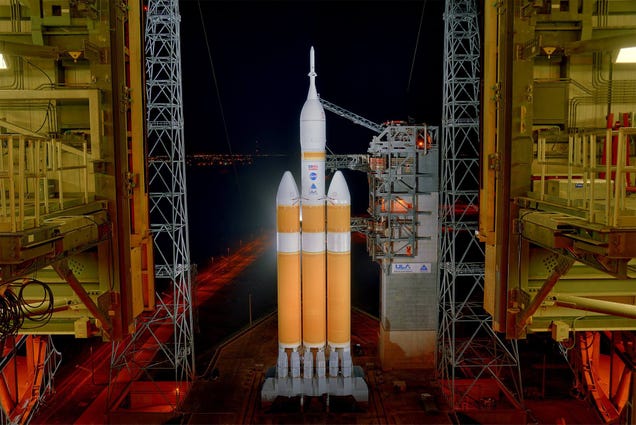
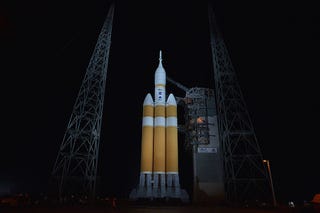
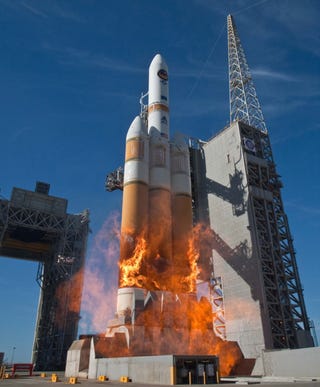
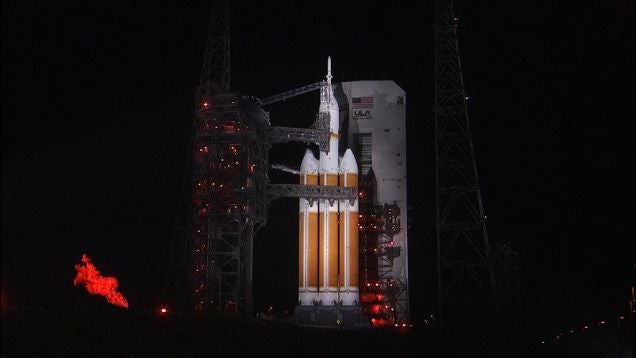

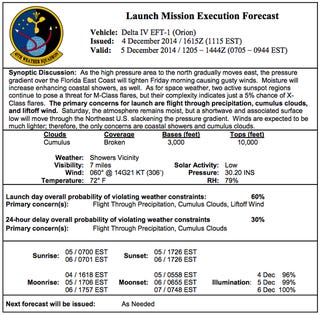
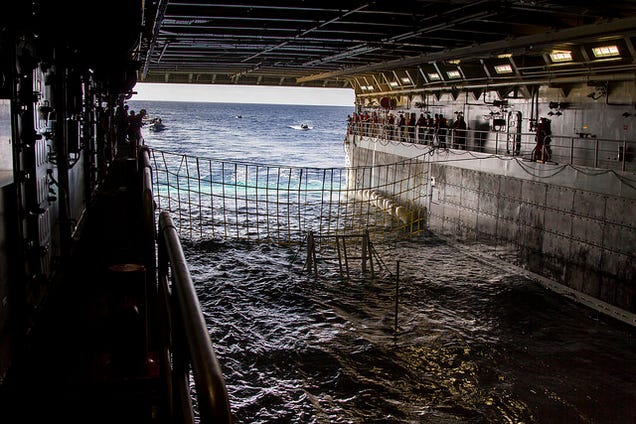
No comments:
Post a Comment